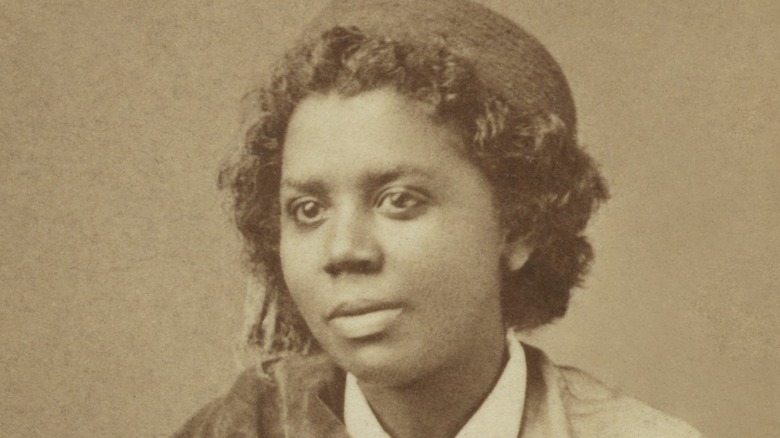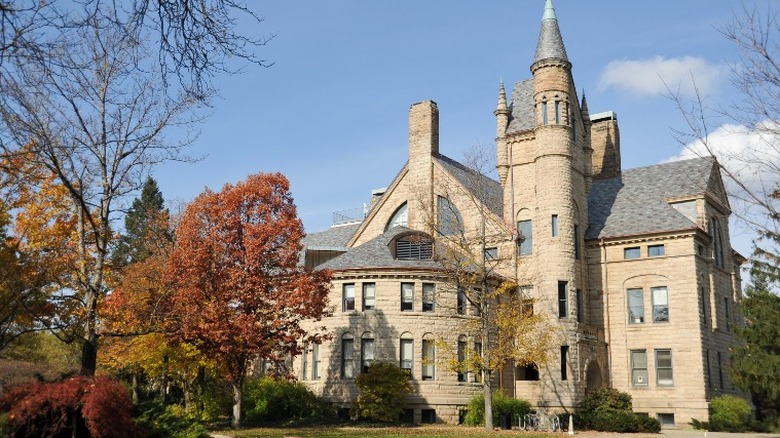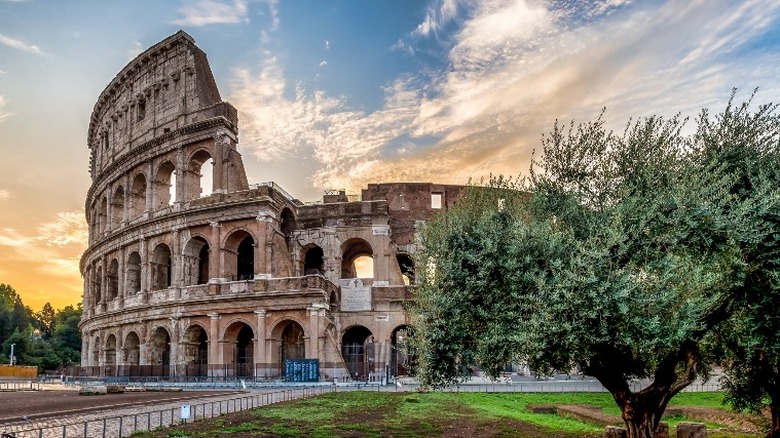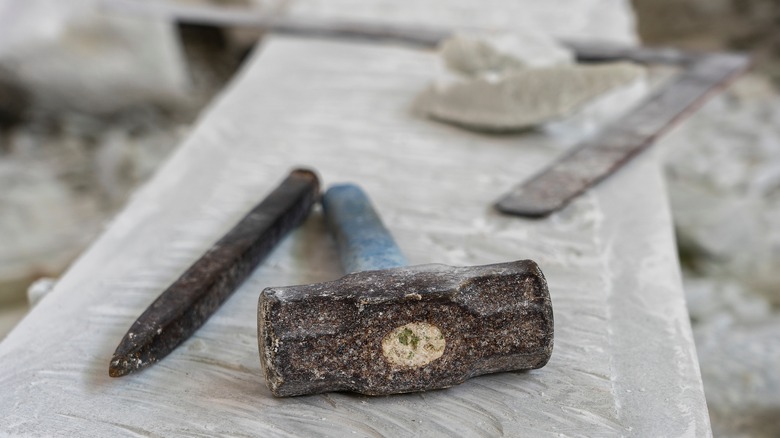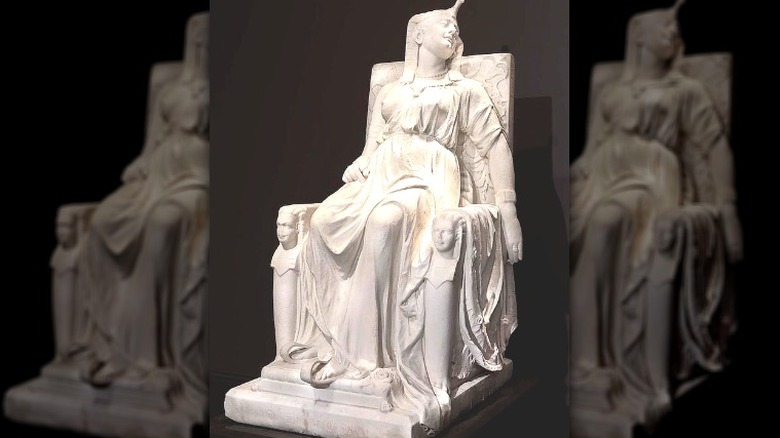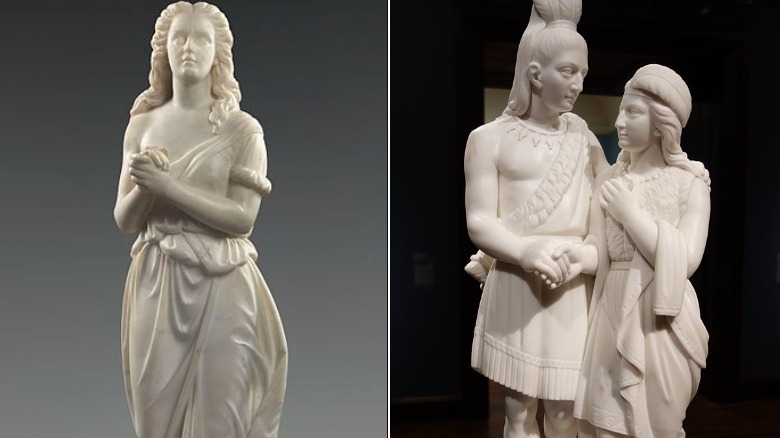How Edmonia Lewis Changed The Art World Forever
Over the centuries the art world has seen many iconic sculptors. From Michelangelo to Picasso, Donatello to Rodin, these artists created some of the incredible and intricate work ever seen. According to My Modern Met, some of the most famous sculptures in the world include Michelangelo's David, The Thinker by Rodin, Nike of Samothrace, and the Venus de Milo. In addition to these masterpieces being undeniable in their beauty, they also arguably set a high standard for the artists who came after them.
One thing many of these great artists of history had in common was the fact that they were all men. This isn't to say that only men can be great artists. However, it can often appear that it has not been until more recent times that we have learned more about the incredible women artists of history as well. While there have been many talented female sculptors throughout history, there was one who broke the stereotypical expectations of both gender and race at a time when America was very much at war with itself. Her name was Edmonia Lewis.
Early life
The early life of Edmonia Lewis is somewhat shrouded in mystery. Her date of birth is not exactly clear, as she claimed to have been born in different years over her lifetime, according to Biography. Some research suggests that she was born in Upstate New York in 1844, though the exact month and day are still unknown. Lewis was biracial as her father was African-American and her mother was part Native American, of the Ojibwa tribe. Edmonia was reportedly orphaned as a child and she claimed to have been raised in part by her mother's people.
As an adult she attended Oberlin College, and it was while she was there that her talent for art and sculpture became abundantly clear. However, her time at Oberlin was not the best of experiences, as it nearly cost her her life. According to Smithsonian Magazine, in 1862 Lewis was attacked by a white mob when she was accused of poisoning two of her fellow students. She was severely beaten, but recovered and was eventually acquitted at trial.
Boston to Rome
Following her harrowing ordeal, Lewis went to Boston where she became acquainted with sculptor Edward Brackett and legendary abolitionist William Lloyd Garrison. It was there that she began to really break into the world of commercial art.
Unlike the other sculptors of the time, Edmonia Lewis did not have any real formal training. Part of this was due to the fact that she was a woman and that she was African-American. During this time period in America, sculptors were generally male and Caucasian and they were mainly the ones allowed to attend classes on subject matter such as anatomy (per Smithsonian Magazine). As such, Lewis began working anyway, and had sculptor Edward Brackett (per Tufts University) as her mentor.
After getting a little bit of traction in the United States, Lewis decided to live and work in Rome, Italy. When she arrived there in 1866, she became friends with another female American sculptor named Harriet Hosmer (per Britannica), who supported Lewis in her ambitions. While in Rome, Lewis created some of her most famous and recognizable pieces.
Subject matter and inspiration
Every artist needs a subject matter as a source of inspiration to create their art. Lewis' earliest work centered around sculpted portraits of famous abolitionists and advocates. According to Smithsonian Magazine, she started selling medallions made of plaster and clay that featured the images of Wendell Phillips, William Lloyd Garrison, and John Brown.
The first real commercial and financial success Lewis had came in 1864. She created a bust of Colonel Robert Shaw who was in charge of the 54th Massachusetts Infantry Regiment during the Civil War (via History). This particular regiment was unique as it was only the second all Black Union Army force to serve in this war. Shaw was killed leading his men into battle against the Confederates' Fort Wagner, and then buried in a mass grave along with some of his troops. The sale of his bust was what allowed Lewis to afford her move to Europe. Over her career, Lewis' work generally appears to be portraits and images of famous figures, or were in some way inspired by her heritage as an African-American and Native American woman.
Most famous sculptures
Over her career Lewis created many beautiful sculptures. Her first bust of Colonel Robert Shaw helped her get a bit of recognition initially, and once she arrived in Rome her work began to really tap into her talent. According to ThoughtCo., in 1867 she created one of her most popular pieces, called "Forever Free" (via the Metropolitan Museum of Art). This sculpture commemorated the ratification of the 13th Amendment to the United States Constitution, which abolished slavery in the United States.
Lewis created other stunning sculptures, including "Old Arrow-Maker and His Daughter" (at the Smithsonian American Art Museum), "Hagar in the Wilderness" (also at the Smithsonian), and "Hiawatha" (at the Metropolitan Museum of Art). However, perhaps her most famous sculpture is "The Death of Cleopatra." The creation stands a bit over five feet tall and weighs about 3,000 pounds, according to Art, Artists, Artwork. Carved out of white marble, the sculpture depicts the moment of Cleopatra's death by her own hand. Lewis shipped her creation back to the U.S. for it to be presented in the Centennial Exhibition in 1876, per Smithsonian Magazine. Though it was met with somewhat mixed reviews due to the "graphic nature" of the subject matter, it was given a place in the Memorial Hall, designated for American artists.
Later life and legacy
Though Edmonia Lewis is often recognized as one of the first Black professional sculptors in history, many of the details about her life are still unknown. The latter part of her life she appears to have spent in Europe, still creating her amazing artwork. According to ThoughtCo., she produced her last sculpture in 1883 and was allegedly visited by Fredrick Douglass while she lived in Rome.
Though she created a number of beautiful sculptures, unfortunately many of them have been lost over time. Some of her surviving works, such as "The Death of Cleopatra," "Hagar," and "Forever Free" have found homes in places like the Smithsonian Institute and The Metropolitan Museum of Art.
Just as with the historical record of the rest of her life, the details surrounding Lewis' death are a bit fuzzy, as there were different years for her date of death. Recent research, however, indicates that she died on September 17, 1907. According to the New York Post, Lewis was initially buried in an unmarked grave which was finally unearthed in 2012, in St. Mary's Catholic Cemetery in London, England. It now has a proper headstone, commemorating the sculptor.
